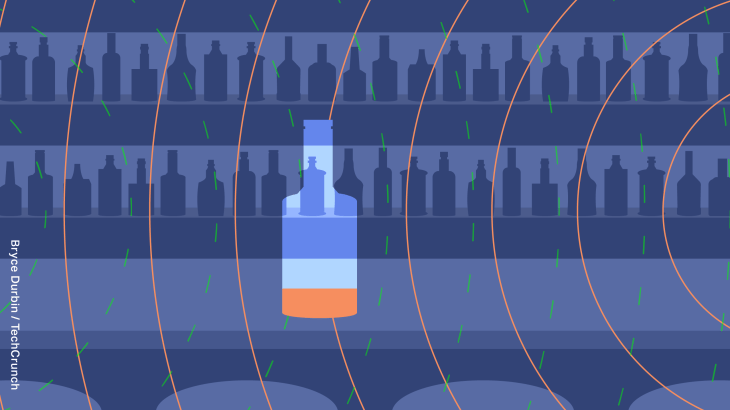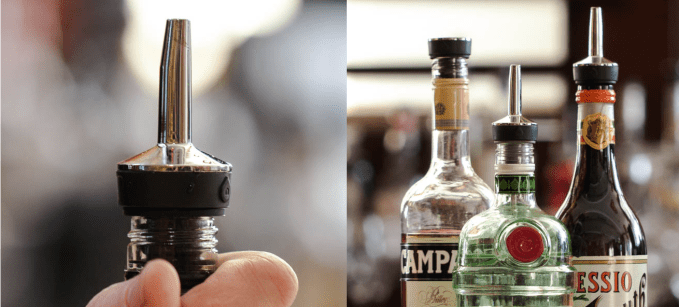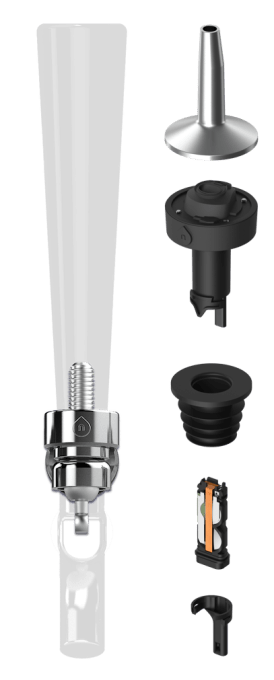 By. Josh Constine
By. Josh Constine
Bars lose 20% of their alcohol to overpours and “free” drinks for friends. That amounts to $50 billion per year in booze that mysteriously disappears, making life tough for every pub and restaurant. Nectarwants to solve that mystery with its ultrasound depth-sensing bottle caps that measure how much liquid is left in a bottle by measuring how long it takes a sonar pulse to bounce back. And now it’s bringing real-time pour tracking to beer with its gyroscopic taps. The result is that bar managers can determine who’s pouring too much or giving away drink, which promotions are working and when to reorder bottles without keeping too much stock on hand — and avoid wasting hours weighing or eyeballing the liquor level of their inventory.
Nectar’s solution to alcohol shrinkage has now attracted a $10 million Series A led by DragonCapital.vc and joined by former Campari chairman Gerry Ruvo, who will join the board. “Not a lot of technology has come to the bottle,” Nectar CEO Aayush Phumbhra says of ill-equipped bars and restaurants. “Liquor is their highest margin and highest cost item. If you don’t manage it efficiently, you go out of business.” Other solutions can look ugly to customers, forcibly restrict bartenders or take time and money to install and maintain. In contrast, Phumbhra tells me, “I care about solving deep problems by building a solution that doesn’t change behavior.”

Investors were eager to back the CEO, since he previously co-founded text book rental giant Chegg — another startup disrupting an aged market with tech. “I come from a pretty entrepreneurial family. No one in my family has ever worked for anyone else before,” Phumbhra says with a laugh. He saw an opportunity in the stunning revelation that the half-trillion-dollar on-premises alcohol business was plagued by missing booze and inconsistent ways to track it.
 Typically at the end of a week or month, a bar manager will have staff painstakingly look at each bottle, try to guess what percent remains and mark it on a clipboard to be loaded into a spreadsheet later. While a little quicker, that’s very subjective and inaccurate. More advanced systems see every bottled weighed to see exactly how much is left. If they’re lucky, the scale connects to a computer, but they still have to punch in what brand of booze they’re sizing up. But the process can take many hours, which amounts to costly labor and infrequent data. None of these methods eliminate the manual measurement process or give real-time pour info.
Typically at the end of a week or month, a bar manager will have staff painstakingly look at each bottle, try to guess what percent remains and mark it on a clipboard to be loaded into a spreadsheet later. While a little quicker, that’s very subjective and inaccurate. More advanced systems see every bottled weighed to see exactly how much is left. If they’re lucky, the scale connects to a computer, but they still have to punch in what brand of booze they’re sizing up. But the process can take many hours, which amounts to costly labor and infrequent data. None of these methods eliminate the manual measurement process or give real-time pour info.
So with $6 million in funding, Nectar launched in 2017 with its sonar bottle caps that look and operate like old-school pourers. When bars order them, they come pre-synced and labeled for certain bottle shapes like Patron or Jack Daniels. Their Bluetooth devices stay charged for a year and connect wirelessly to a base hub in the bar. With each pour, the sonar pulse determines how much is in the bottle and subtracts it from the previous measurement to record how much was doled out. And the startup’s new gyroscopic beer system is calibrated to deduce pour volume from the angle and time the tap is depressed without the need for a sensor to be installed (and repaired) inside the beer hose.Continue reading

No comments:
Post a Comment